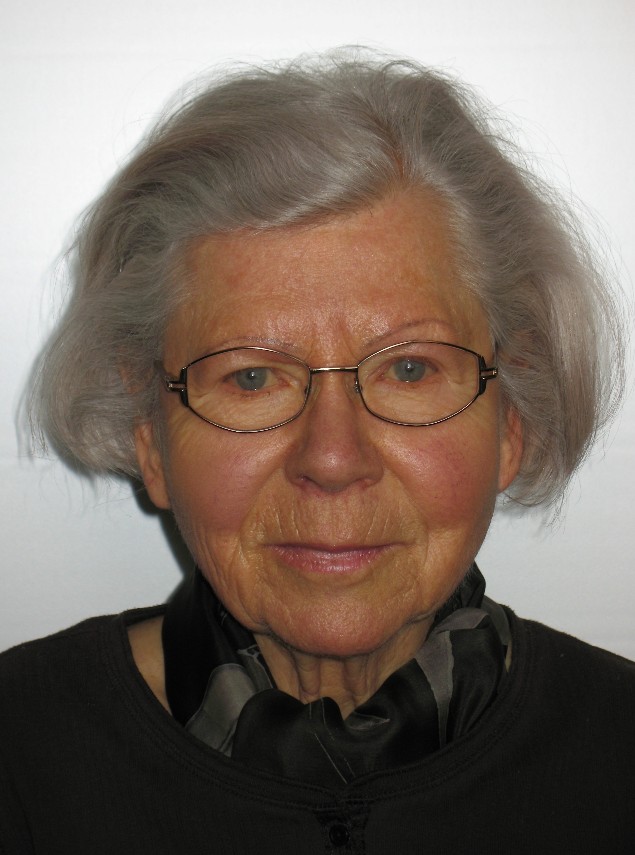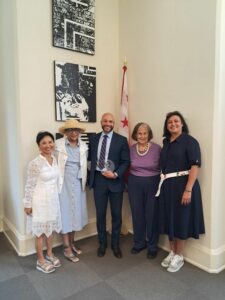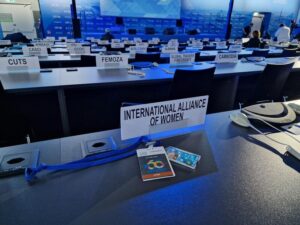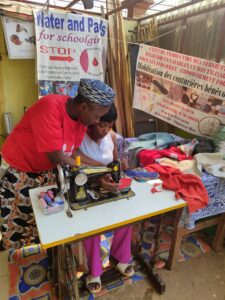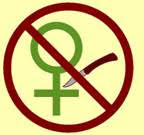 “What can members of INTEGRA, the German network on FGM/C, do to reach women who have come to Germany as refugees or asylum seekers since 2015?” This motion by Deutscher Frauenring was thoroughly debated at a meeting in July. The problem is, the questionnaire developed by the Federal Agency for Migration and Refugees to register the newcomers (at least a total of 1 million in 2015) does not ask if a woman has undergone FGM/C. This means INTEGRA members equipped for medical and psychological counseling and for raising awareness do not know whom to target. INTEGRA successfully fought to make the practice punishable under a separate sub-paragraph of the German penal code but how do the newcomers learn that the social norm they practice is against the law? If they are staunch believers in FGM/C they may negatively influence compatriots who considered abandoning the practice. This is a dilemma which cannot be solved in the near future! Another problem is the funding needed for the work of the specialized NGOs. Voluntary involvement only goes that far!
“What can members of INTEGRA, the German network on FGM/C, do to reach women who have come to Germany as refugees or asylum seekers since 2015?” This motion by Deutscher Frauenring was thoroughly debated at a meeting in July. The problem is, the questionnaire developed by the Federal Agency for Migration and Refugees to register the newcomers (at least a total of 1 million in 2015) does not ask if a woman has undergone FGM/C. This means INTEGRA members equipped for medical and psychological counseling and for raising awareness do not know whom to target. INTEGRA successfully fought to make the practice punishable under a separate sub-paragraph of the German penal code but how do the newcomers learn that the social norm they practice is against the law? If they are staunch believers in FGM/C they may negatively influence compatriots who considered abandoning the practice. This is a dilemma which cannot be solved in the near future! Another problem is the funding needed for the work of the specialized NGOs. Voluntary involvement only goes that far!
Among the 30 members of INTEGRA are the National Committees of UN Women and of Unicef, the BMZ (Federal Ministry of Cooperation) and the GIZ, the Agency for German International Cooperation. In the 1990es the Agency had set up in Ouagadougou, Burkina Faso, the Supra-Regional Project to support government and NGO initiatives. They researched and published Best practices and Lessons learnt for the abandonment of the harmful traditional practice, kept track of the situation in many African francophone and some anglophone high-prevalence countries, held a conference in Sierra Leone where 9 out of 10 women are circumcised, to name but a few of the Supra-Regional Project’s activities. Early on GIZ experts invited NGOs working on FGM/C in Germany and/or in Africa – among them my organization Deutscher Frauenring – to meetings. Thus, a German network Government/ NGOs came into existence in 2000.
To learn more about how INTEGRA works in program countries go to The WHO fact sheet on FGM/C updated in 2016 is available in all official UN languages. For the English text see http://www.who.int/mediacentre/factsheets/fs241/en/index.html . I recommend reading it, not only for the medical information but also for the different explanations why it is practiced. It also has a resume of International Response and of WHO Response. As to the violation of the human rights of women and girls it states that FGM/C constitutes an extreme form of discrimination.
The IAW standpoint is: The Zero tolerance request repeated each 6th February means: no loopholes like medicalization, no pricking or other “minor” Type 4 procedures to conform with social norms. Women’s sexual and reproductive health rights have to be respected. To avoid complications at birth access to contraception is of particular importance.
This also means deep-rooted beliefs have to be abandoned. These are myths about dire consequences if the woman is not circumcised:
– Her health is jeopardized, so is that of the man and the child
– She develops excessive libido, is prone to marital infidelity and prostitution
– She gets sick and infertile
– The man gets impotent because of the woman’s “penis” – her clitoris which also interferes with sexual intercourse and birth and kills the baby.
Author’s comment re this compilation: “Myths are created to cover up what is basically always behind them: controlling women’s sexuality.”
Myths and reality are far apart. FGM/C is internationally recognized as a public health issue. However, weaknesses in a government’s health structure present obstacles to follow through with an issue.
The UNDP/ UNFPA/WHO/ World Bank Special Programme of Research, Development and Research Training in Human Reproduction promotes, coordinates, supports, conducts, and evaluates research on sexual and reproductive health, with particular reference to the needs of developing countries.
http://www.who.int/reproductivehealth/topics/fgm/progress72_fgm.pdf published in 2006 deals with FGM/C and has a map of Africa showing the prevalence among women aged 15 to 49. A study involving 28 393 women attending 28 obstetric centers in rural and urban areas of Burkina Faso, Ghana, Kenya, Nigeria and Sudan, brought solid evidence that FGM/C has a negative impact on obstetric outcomes for the mother and the newborn. The risk of an adverse outcome increases with more extensive FGM/C (Type 2 and 3).
http://www.stopfgmmideast.org/ is the best Internet address I know to get condensed information about FGM/C in countries and regions outside Africa. There you also find a map on these areas of concern including country information. And you find a note on Russian religious leaders endorsing FGM/C this August. To read more go to http://www.premier.org.uk/News/World/Disgust-as-religious-leaders-endorse-FGM-in-Russia
New surgical techniques including clitoral reconstruction after (FGM/C) offer hope. In several countries including Burkina Faso and Senegal doctors trained to perform surgery to reduce clitoral pain, improve sexual pleasure, and restore a vulvar appearance similar to uncircumcised women.
Most women in Africa cannot afford the surgery, nor are they able to travel far. Quote from the story of a nurse in Ouagadougou seeking relief : “Contrary to the repair of consequences of the circumcision (obstructed menstruation, impossibility to give birth etc.) which is done in many health centers at no cost (except for a standard medical kit), the government does not pay for clitoris restoration associated primarily with the quest for pleasure.” Donations and bona fide action help a limited number of women. In European countries costs of the surgery performed on circumcised women are mostly covered by health insurance systems.
To ensure funding on an international scale the International Donors’ Working Group on FGM/C has been meeting for annual workshops since the year 2000. The EU is involved, too. Research, programs, campaigns and projects are expensive, particularly those with a holistic approach. In affluent societies cost is reduced by voluntary workers. In low and middle income countries, according to my experience, poorly or irregularly paid administrative authorities receive a small compensation for their cooperation, and other groups involved such as experts and professionals, need the income to survive.
Conclusion: No one has ever added up the cost of all the efforts – national and international. No one ever tried to establish a list of all the jobs created by awareness-raising and following through with agreed-upon action on how to free girls and women from undergoing FGM/C and empowering them to make decisions of their own. Accountability and evaluation are a must. Even for small scale projects we should insist on accountability and – at least – self-evaluation.
International action, for ex. the UNFPA joint programme on FGM/C, also aims at eliminating other harmful traditional practices like child marriage.
